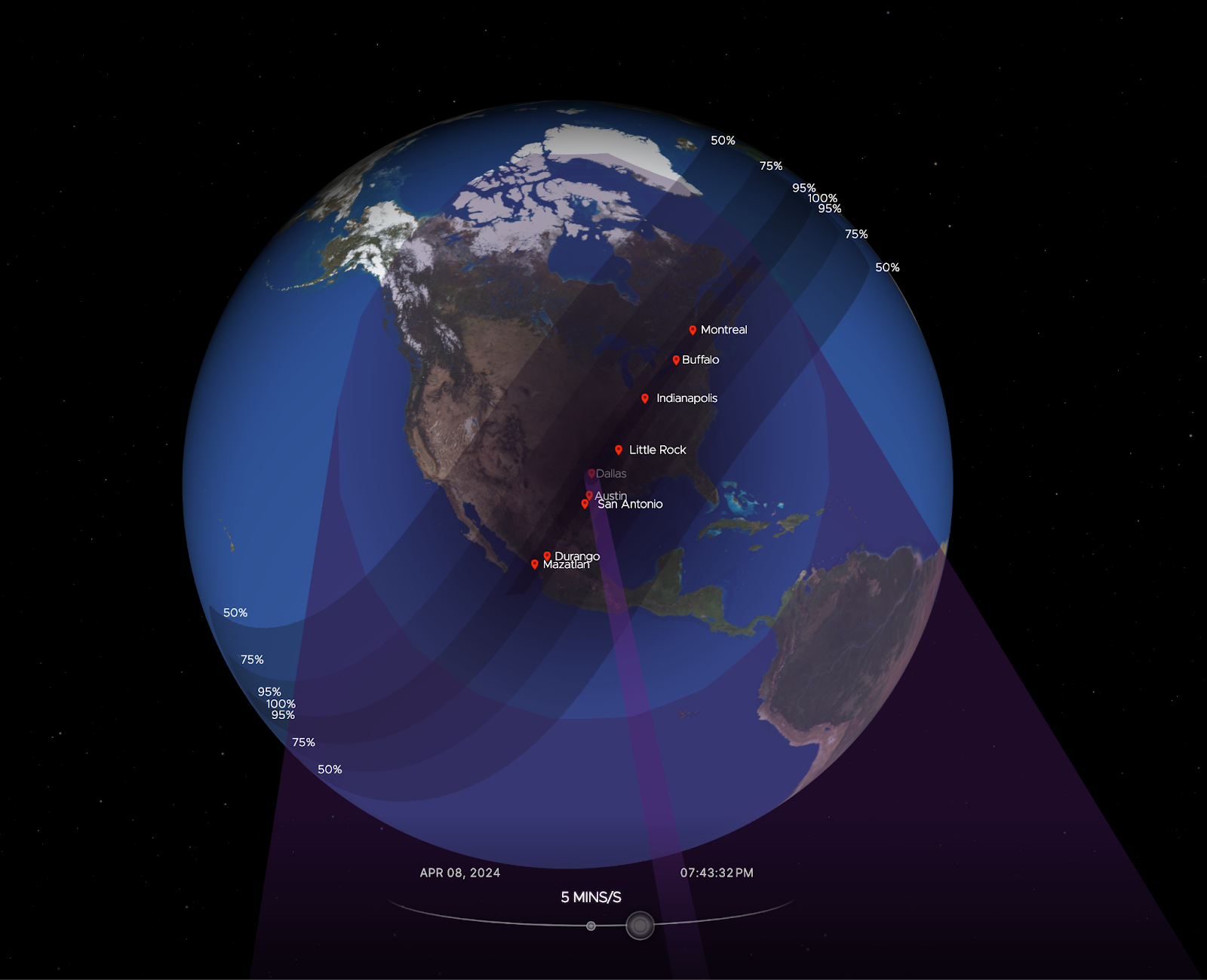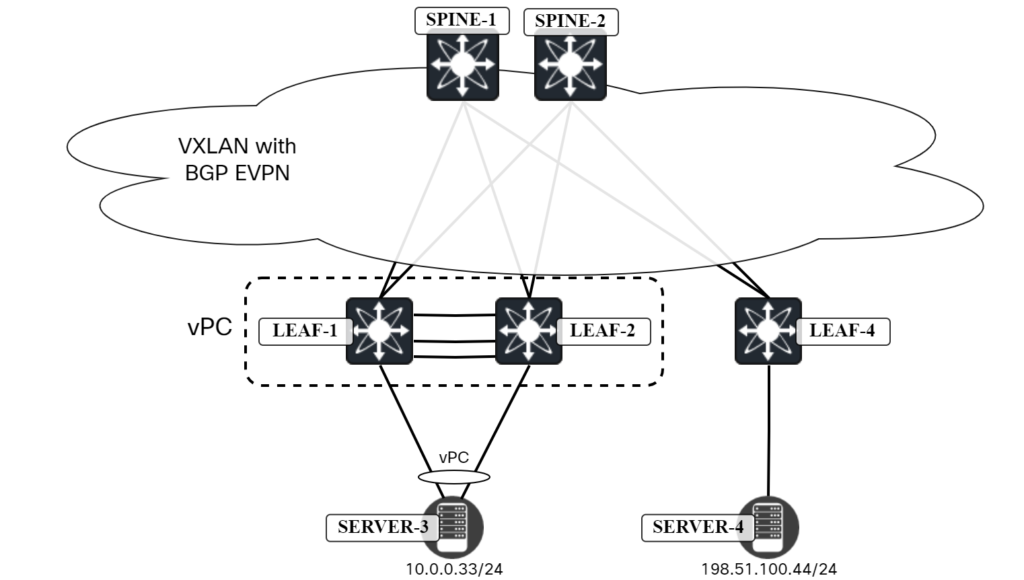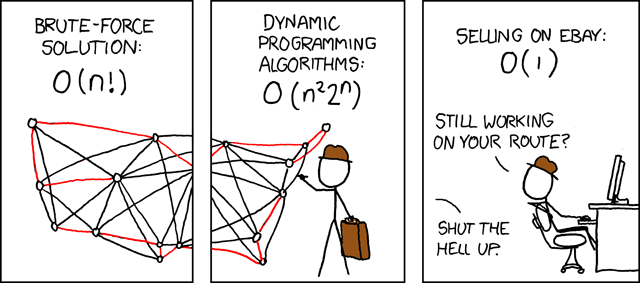SR/MPLS Security Framework
A long-time friend sent me this question:
I would like your advice or a reference to a security framework I must consider when building a green field backbone in SR/MPLS.
Before going into the details, keep in mind that the core SR/MPLS functionality is not much different than the traditional MPLS:
SR/MPLS Security Framework
A long-time friend sent me this question:
I would like your advice or a reference to a security framework I must consider when building a green field backbone in SR/MPLS.
Before going into the details, keep in mind that the core SR/MPLS functionality is not much different than the traditional MPLS:
Total eclipse of the Internet: traffic impacts in Mexico, the US, and Canada

There are events that unite people, like a total solar eclipse, reminding us, humans living on planet Earth, of our shared dependence on the sun. Excitement was obvious in Mexico, several US states, and Canada during the total solar eclipse that occurred on April 8, 2024. Dubbed the Great North American Eclipse, millions gathered outdoors to witness the Moon pass between Earth and the Sun, casting darkness over fortunate states. Amidst the typical gesture of putting the eclipse glasses on and taking them off, depending on if people were looking at the sky during the total eclipse, or before or after, what happened to Internet traffic?
Cloudflare’s data shows a clear impact on Internet traffic from Mexico to Canada, following the path of totality. The eclipse occurred between 15:42 UTC and 20:52 UTC, moving from south to north, as seen in this NASA image of the path and percentage of darkness of the eclipse.

Looking at the United States in aggregate terms, bytes delivered traffic dropped by 8%, and request traffic by 12% as compared to the previous week at 19:00 UTC Continue reading
Mixed Results For The Datacenter Thundering Thirteen In Q4
We have been tracking the financial results for the big players in the datacenter that are public companies for three and a half decades, but starting last year we started dicing and slicing the numbers for the largest IT suppliers for stuff that goes into datacenters so we can give you a better sense what is and what is not happening out there. …
Mixed Results For The Datacenter Thundering Thirteen In Q4 was written by Timothy Prickett Morgan at The Next Platform.
NB473: Duty To Report (Your Breaches); Intel Foundry Biz Loses $7 Billion
Take a Network Break! This week we start with some FU on Juniper’s Mist AI, the ConnectWise vulnerability, and the 25th anniversary of the Cisco Cat6. The US Cybersecurity & Infrastructure Security Agency (CISA) has proposed new rules that require organizations to report security incidents within 72 hours and ransomware payments within 24 hours. Intel... Read more »Subsea Cable Alternatives Get Serious Attention
Subsea cable alternatives can provide a level of comfort for those concerned about disruptions. Realistically, they will continue to play a small, but critical role in the short term.Major data center power failure (again): Cloudflare Code Orange tested
This post is also available in Français, Español.

Here's a post we never thought we'd need to write: less than five months after one of our major data centers lost power, it happened again to the exact same data center. That sucks and, if you're thinking "why do they keep using this facility??," I don't blame you. We're thinking the same thing. But, here's the thing, while a lot may not have changed at the data center, a lot changed over those five months at Cloudflare. So, while five months ago a major data center going offline was really painful, this time it was much less so.
This is a little bit about how a high availability data center lost power for the second time in five months. But, more so, it's the story of how our team worked to ensure that even if one of our critical data centers lost power it wouldn't impact our customers.
On November 2, 2023, one of our critical facilities in the Portland, Oregon region lost power for an extended period of time. It happened because of a cascading series of faults that appears to have been caused by maintenance by the Continue reading
Developer Week 2024 wrap-up
This post is also available in 简体中文, 繁體中文, 日本語, 한국어, Deutsch, Français and Español.

Developer Week 2024 has officially come to a close. Each day last week, we shipped new products and functionality geared towards giving developers the components they need to build full-stack applications on Cloudflare.
Even though Developer Week is now over, we are continuing to innovate with the over two million developers who build on our platform. Building a platform is only as exciting as seeing what developers build on it. Before we dive into a recap of the announcements, to send off the week, we wanted to share how a couple of companies are using Cloudflare to power their applications:
We have been using Workers for image delivery using R2 and have been able to maintain stable operations for a year after implementation. The speed of deployment and the flexibility of detailed configurations have greatly reduced the time and effort required for traditional server management. In particular, we have seen a noticeable cost savings and are deeply appreciative of the support we have received from Cloudflare Workers.
- FAN Communications
Milkshake helps creators, influencers, and business owners create engaging web pages Continue reading
netlab 1.8.1: VRF OSPFv3, Integration Tests
netlab release 1.8.1 added a interesting few features, including:
- OSPFv3 in VRFs, implemented on Arista EOS, Cisco IOS, Cisco IOS-XE, FRR, and Junos (vMX, vPTX, vSRX).
- EBGP sessions over IPv4 unnumbered and IPv6 LLA interfaces on Arista EOS
- Cisco IOS XRd container support
- Retry tests until the timeout functionality in netlab validate.
This time, most of the work was done behind the scenes1.
netlab 1.8.1: VRF OSPFv3, Integration Tests
netlab release 1.8.1 added a interesting few features, including:
- OSPFv3 in VRFs, implemented on Arista EOS, Cisco IOS, Cisco IOS-XE, FRR, and Junos (vMX, vPTX, vSRX).
- EBGP sessions over IPv4 unnumbered and IPv6 LLA interfaces on Arista EOS
- Cisco IOS XRd container support
- Retry tests until the timeout functionality in netlab validate.
This time, most of the work was done behind the scenes1.
Running CVP on Proxmox
With VMware jacking up the prices and killing off the free version of ESXi, people are looking to alternatives for a virtualization platform. One of the more popular alternatives is Proxmox, which so far I’m really liking.
If you’re looking to run CVP on Proxmox, here is how I get it installed. I’m not sure if Proxmox counts as officially supported for production CVP (it is KVM, however), but it does work fine in lab. Contact Arista TAC if you’re wondering about Proxmox suitability.
Getting the Image to Proxmox
Oddly enough, what you’ll want to do is get a copy of the CVP OVA, not the KVM image. I’m using the most recent release (at the time of writing, always check Arista.com) of cvp-2024.1.0.ova.
Get it onto your Proxmox box (or one of them if you’re doing a cluster). Place it somewhere where there’s enough space to unpack it. In my case, I have a volume called volume2, which is located at /mnt/pve/volume2.
I made a directory called tmp and copied the file to that directory via SCP (using FileZilla, though there’s several ways to get files onto Proxmox, it’s just a Linux box). I Continue reading
Troubleshooting vPC in My Virtual Lab
I’m preparing a blog post on setting up vPC in a VXLAN/EVPN environment. While doing so, I ran into some issues. Rather than simply fixing them, I wanted to share the troubleshooting experience as it can be useful to see all the things I did to troubleshoot, including commands, packet captures, etc., and learn a little about virtual networking. As always, thanks to Peter Palúch for providing assistance with the process.
Topology
The following topology implemented in ESX is used:

Background
I had just configured the vPC peer link and vPC peer link keepalive. I verified that the vPC was functional with the following command:
Leaf1# show vpc
Legend:
(*) - local vPC is down, forwarding via vPC peer-link
vPC domain id : 1
Peer status : peer adjacency formed ok
vPC keep-alive status : peer is alive
Configuration consistency status : success
Per-vlan consistency status : success
Type-2 consistency status : success
vPC role : primary
Number of vPCs configured : 1
Peer Gateway : Disabled
Dual-active excluded VLANs : -
Graceful Consistency Check : Enabled
Auto-recovery status : Disabled
Delay-restore status : Timer is off.(timeout = 30s)
Delay-restore SVI status : Timer is off.(timeout = Continue reading
ACK and NACK in Networking
The post ACK and NACK in Networking appeared first on Noction.
VPP with loopback-only OSPFv3 – Part 1
Introduction
A few weeks ago I took a good look at the [Babel] protocol. I found a set of features there that I really appreciated. The first was a latency aware routing protocol - this is useful for mesh (wireless) networks but it is also a good fit for IPng’s usecase, notably because it makes use of carrier ethernet which, if any link in the underlying MPLS network fails, will automatically re-route but sometimes with much higher latency. In these cases, Babel can reconverge on its own to a topology that has the lowest end to end latency.
But a second really cool find, is that Babel can use IPv6 nexthops for IPv4 destinations - which is super useful because it will allow me to retire all of the IPv4 /31 point to point networks between my routers. AS8298 has about half of a /24 tied up in these otherwise pointless (pun intended) transit networks.
In the same week, my buddy Benoit asked a question about OSPFv3 on the Bird users mailinglist [ref] which may or may not have been because I had been messing around with Babel using only IPv4 loopback interfaces. And just a Continue reading
Worth Reading: Cybersecurity Is Broken
Another cybersecurity rant worth reading: cybersecurity is broken due to lack of consequences.
Bonus point: pointer to RFC 602 written in December 1973.
Worth Reading: Cybersecurity Is Broken
Another cybersecurity rant worth reading: cybersecurity is broken due to lack of consequences.
Bonus point: pointer to RFC 602 written in December 1973.
Balancing MMLU With The Shortest Path Cost Constraints

It is almost impossible for someone coming from a purely mathematical background with little exposure to applications to understand how to go about formulating a real-world problem in mathematical terms. - Dantzig.
In our previous post, we explored the Min. Max Link Utilization problem using Linear Programming. The focus was on optimizing network traffic distribution to achieve optimal link utilization. However, this approach did not consider the potential impact on path lengths, allowing flows to be placed on longer paths without constraints. We mentioned this briefly in a passing statement. However, I thought it would be worth exploring the extended problem formulation that introduces an additional constraint to strike a balance between minimizing link utilization and controlling the deviation of paths from their shortest counterparts.
The core objective remains the same—to minimize the maximum link utilization across the network. However, we now introduce a conflicting constraint that aims to limit the extent to which paths can deviate from their shortest routes. This constraint is crucial for keeping path lengths within an acceptable range, as excessively long paths can degrade the user experience.
Mathematically, we are faced with two opposing constraints. On the one hand, we strive to minimize link utilization, Continue reading
Booting Raspberry Pi 3 B from USB Drive
USB drives typically have a longer lifespan and better durability compared to SD cards, especially […]
The post Booting Raspberry Pi 3 B from USB Drive first appeared on Brezular's Blog.